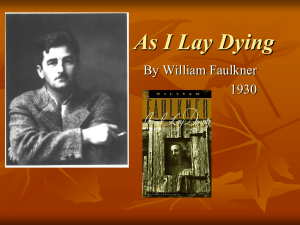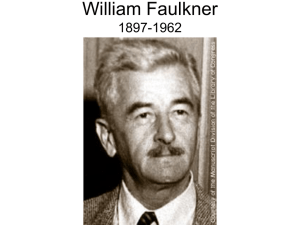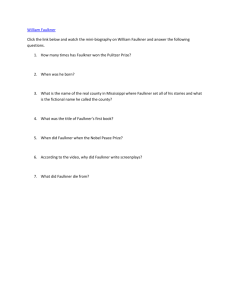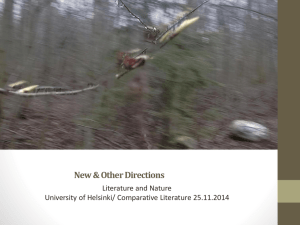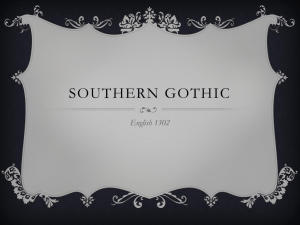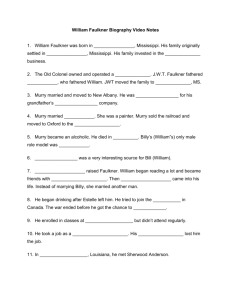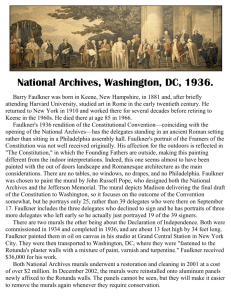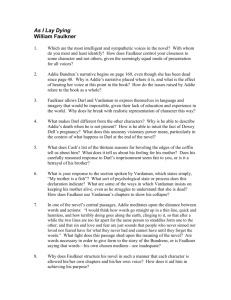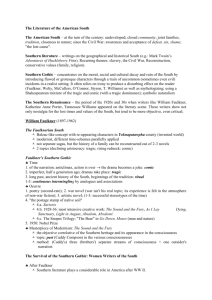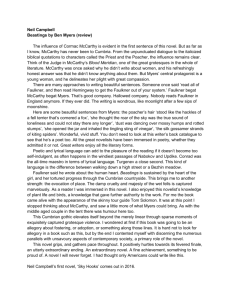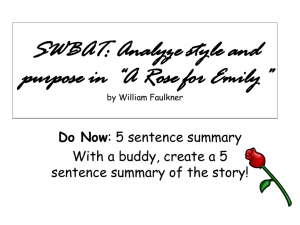Prof. Quick Notes on A,A
advertisement
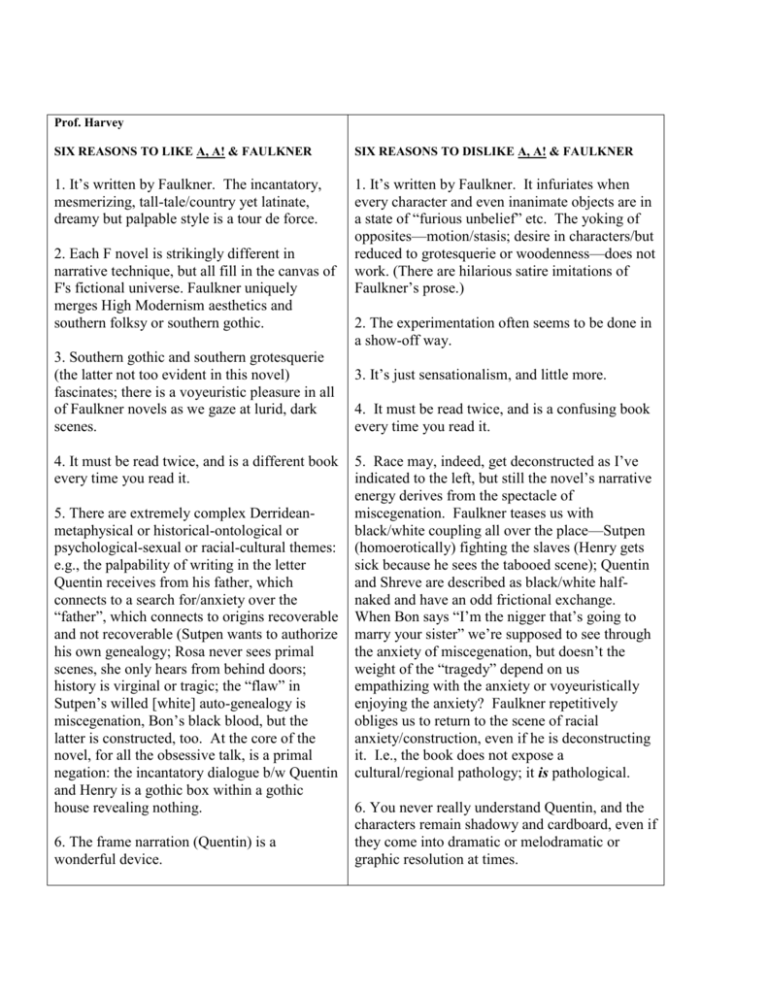
Prof. Harvey SIX REASONS TO LIKE A, A! & FAULKNER SIX REASONS TO DISLIKE A, A! & FAULKNER 1. It’s written by Faulkner. The incantatory, mesmerizing, tall-tale/country yet latinate, dreamy but palpable style is a tour de force. 1. It’s written by Faulkner. It infuriates when every character and even inanimate objects are in a state of “furious unbelief” etc. The yoking of opposites—motion/stasis; desire in characters/but reduced to grotesquerie or woodenness—does not work. (There are hilarious satire imitations of Faulkner’s prose.) 2. Each F novel is strikingly different in narrative technique, but all fill in the canvas of F's fictional universe. Faulkner uniquely merges High Modernism aesthetics and southern folksy or southern gothic. 3. Southern gothic and southern grotesquerie (the latter not too evident in this novel) fascinates; there is a voyeuristic pleasure in all of Faulkner novels as we gaze at lurid, dark scenes. 4. It must be read twice, and is a different book every time you read it. 5. There are extremely complex Derrideanmetaphysical or historical-ontological or psychological-sexual or racial-cultural themes: e.g., the palpability of writing in the letter Quentin receives from his father, which connects to a search for/anxiety over the “father”, which connects to origins recoverable and not recoverable (Sutpen wants to authorize his own genealogy; Rosa never sees primal scenes, she only hears from behind doors; history is virginal or tragic; the “flaw” in Sutpen’s willed [white] auto-genealogy is miscegenation, Bon’s black blood, but the latter is constructed, too. At the core of the novel, for all the obsessive talk, is a primal negation: the incantatory dialogue b/w Quentin and Henry is a gothic box within a gothic house revealing nothing. 6. The frame narration (Quentin) is a wonderful device. 2. The experimentation often seems to be done in a show-off way. 3. It’s just sensationalism, and little more. 4. It must be read twice, and is a confusing book every time you read it. 5. Race may, indeed, get deconstructed as I’ve indicated to the left, but still the novel’s narrative energy derives from the spectacle of miscegenation. Faulkner teases us with black/white coupling all over the place—Sutpen (homoerotically) fighting the slaves (Henry gets sick because he sees the tabooed scene); Quentin and Shreve are described as black/white halfnaked and have an odd frictional exchange. When Bon says “I’m the nigger that’s going to marry your sister” we’re supposed to see through the anxiety of miscegenation, but doesn’t the weight of the “tragedy” depend on us empathizing with the anxiety or voyeuristically enjoying the anxiety? Faulkner repetitively obliges us to return to the scene of racial anxiety/construction, even if he is deconstructing it. I.e., the book does not expose a cultural/regional pathology; it is pathological. 6. You never really understand Quentin, and the characters remain shadowy and cardboard, even if they come into dramatic or melodramatic or graphic resolution at times.

